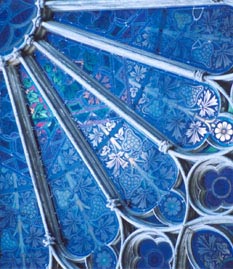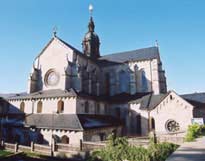|
|
 |
 |
 |
|
 Ebrach Ebrach
Cistercian Abbey
|
|
In 1127 nobleman Berno founded the Cistercian monastery in the basin of River Ebrach in the so-called "Steigerwald” area. This monastery was the third Cistercian abbey in ancient Germany and the oldest and most important in Franconia.
|
|
 |
|
|
|
 |
|
Already during the regency of its first abbot the monastery began to flourish and six further subsidiary monasteries were founded in this years. Sponsors and patrons of Ebrach abbey at that time especially were the prince bishops of Wuerzburg, King Konrad III, whose wife Gertrud and son Friedrich were buried in Ebrach abbey, and the noblemen and patricians from the country and municipalities that surrounded the monastery.
In the year 1525 the abbey was set on fire during the Peasant’s War. In the Thirty Years’ War it was struck by contributions and plundering. Its last period of glory the abbey passed during the 18th century.
In 1803 the monastery was secularized and passed into the possession of the Bavarian government. Some of the monastery buildings were used to found the municipality of Ebrach. The former monastery church was converted into the new Ebrach parish church. In 1851 the remaining monastery buildings finally were converted into a prison, which still exists today as a youth detention centre. |
|
|
|
|
|

|
|
|
|
Local history of Ebrach |
|
The Foundation of Ebrach:
The main problem was to transform the former monastery into a prosperous municipality. The secularization commissioner issued guidelines. He began to auction monastery buildings and arable farmland to private citizens for colonization. Several medieval buildings were torn down and the monastery church was converted into the new parish church of Ebrach. The remaining buildings had been empty for a long time. In 1851 finally a prison was established in these former monastery buildings, which still exists and is used today as a youth detention centre. |
|
|
|
 |
|







